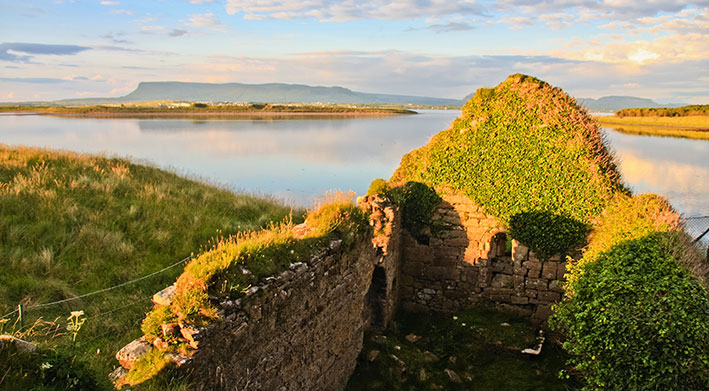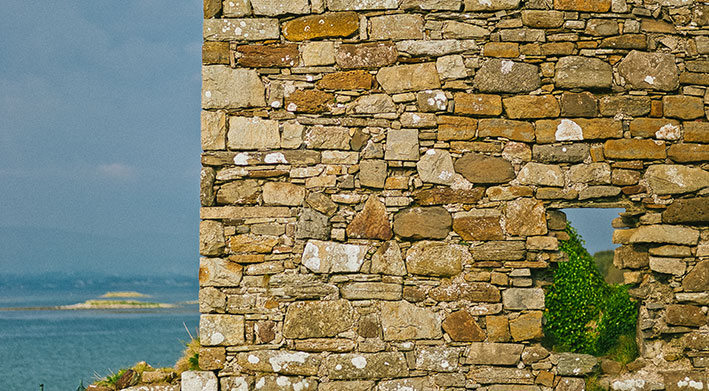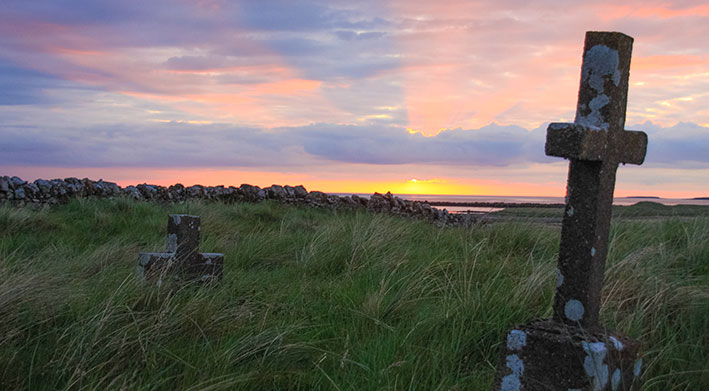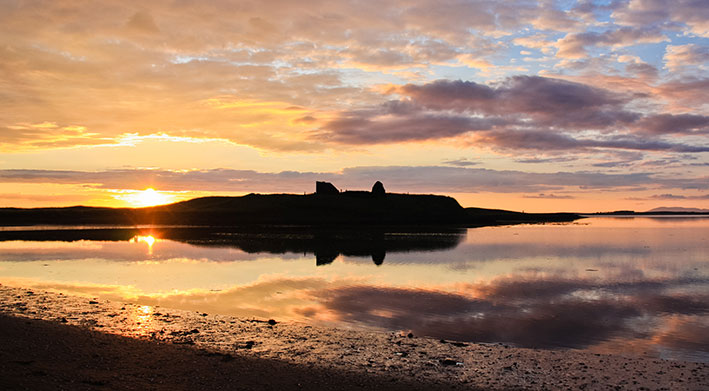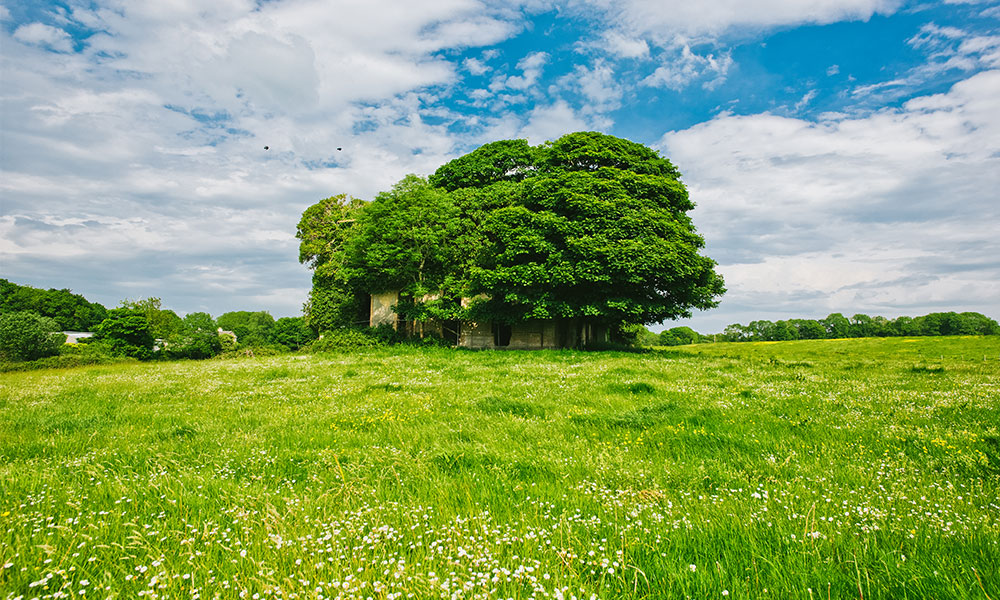OVERVIEW
The ruins of this ancient church stand on the extremity of the Coolera peninsula and the name in Irish means “the church of the Bishop Brón”.
Killaspugbrone church dates back to the period between 1150 and 1220, but the original structure was reputedly built some time in the fifth century. Its former name “Caisle-Irrae” suggests it was most likely enclosed by a circular stone fort or cashel – typical of an early Irish monastic settlement. This is a location steeped in history, set against the spectacular backdrops of Ben Bulben and Knocknarea mountains and the Atlantic ocean.
The sound of the lapping ocean, the birds singing and the slight chance of catching sunset from here make it a must do for every visitor. Behind the church is a small sandy beach which looks directly at Coney Island. Relax, unwind and forget all your worries in this unforgettable corner of our little secret.

